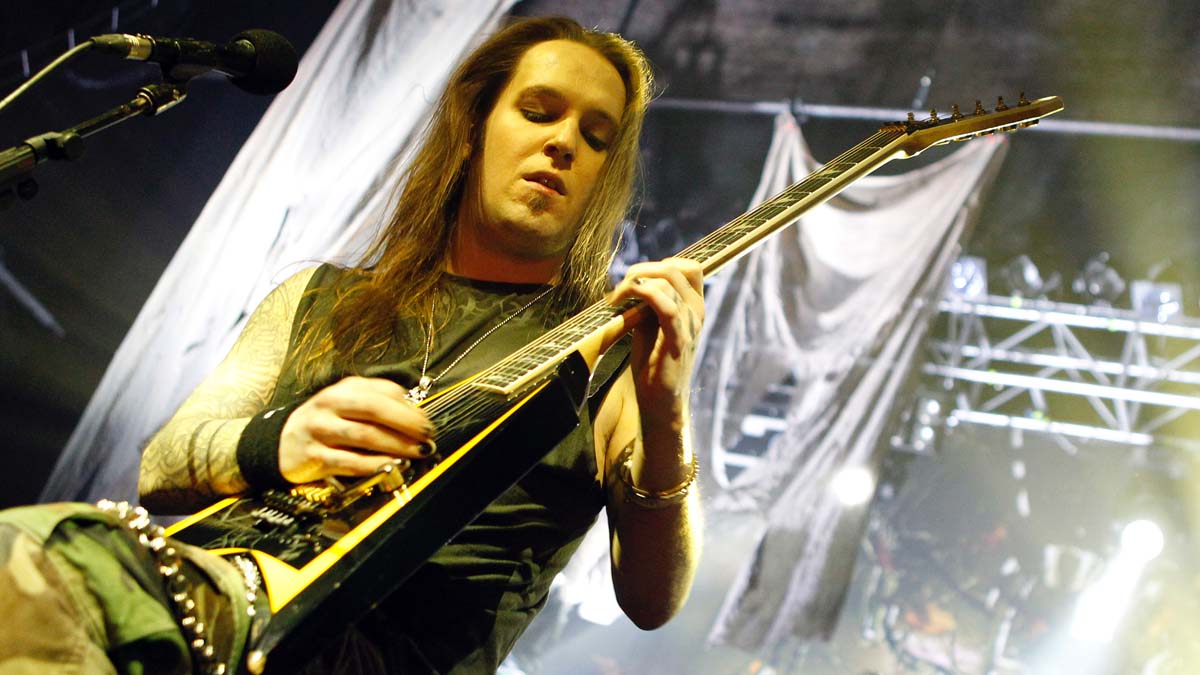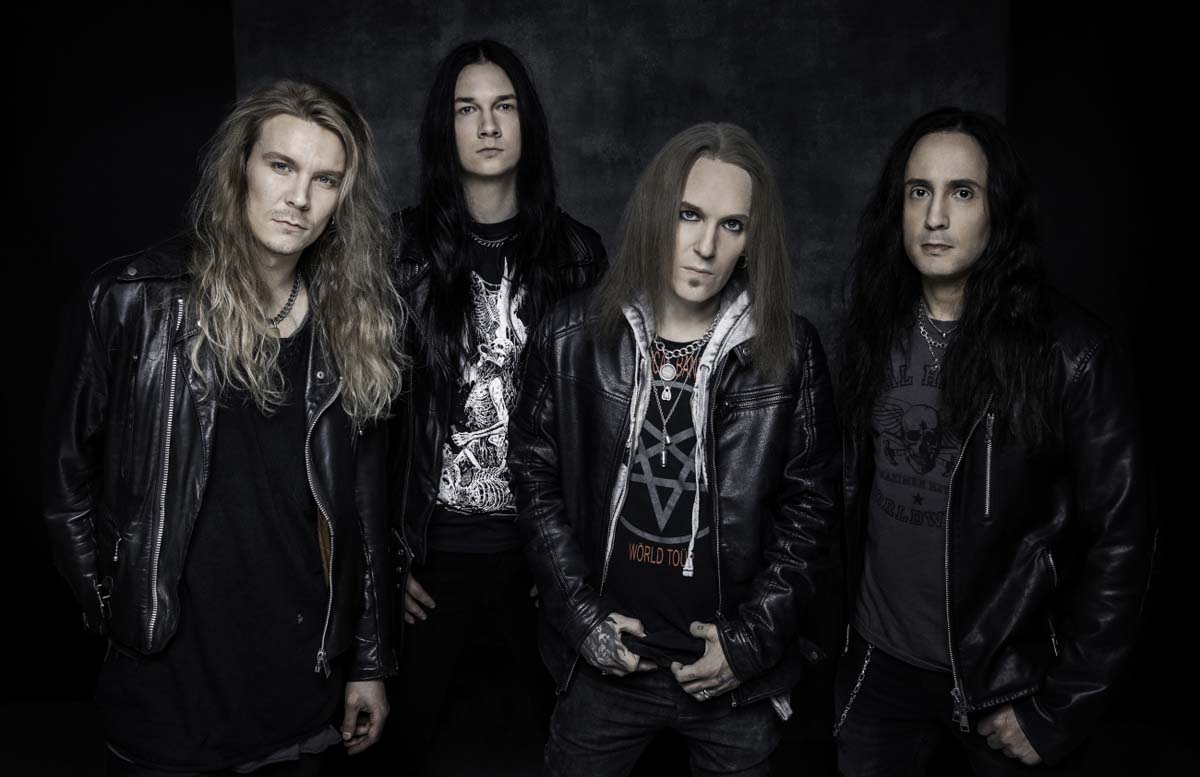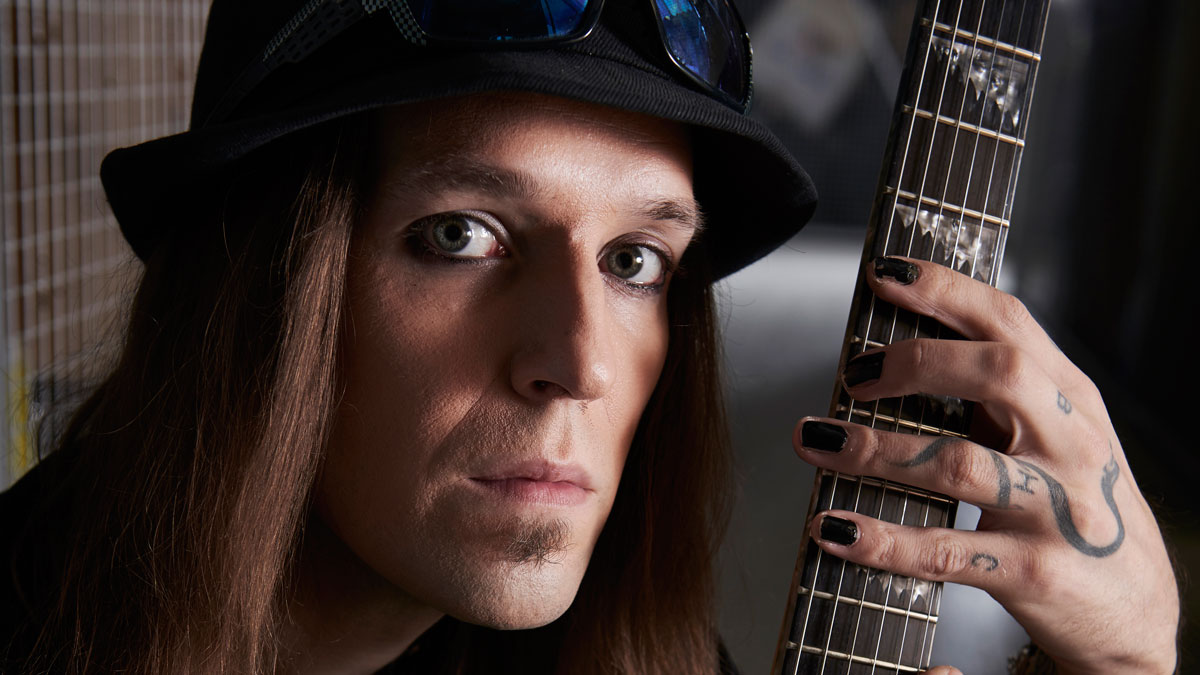Bodom After Midnight’s Daniel Freyberg pays tribute to Alexi Laiho: “He created his own style. It was technical excellence combined with a punk rock attitude”
Freyberg looks back at the former Children Of Bodom frontman‘s iconoclastic sound and his virtuoso guitar playing

Alexi Laiho was the preeminent underground guitar superstar of the 21st century. It was his virtuoso playing style, his charisma, and, perhaps above all, his creative chutzpah that allowed Children Of Bodom to straddle the cult and the mainstream with a sound that was aggressive and epic.
Laiho borrowed from all quarters of metal’s fiefdom – from death metal, thrash, black and power metal – and from beyond. There was a flamboyance to Bodom’s sound; it was heavy metal songwriting as a work of morbid theatre, an electric guitar spectacular of big riffs and melodies. Bodom united the tribes.
When Laiho died on 29 December 2020, from alcohol-induced liver degeneration, aged 41, he left an immediate legacy, a discography that started in the late 90s and gathered steam in the decades that followed. And there was more to come. There was a three-track EP from his newly formed supergroup Bodom After Midnight.
A means of carrying on where Children Of Bodom left off following their 2019 split, Bodom After Midnight saw Laiho joined once more by his Children Of Bodom wingman, Daniel Freyberg, on guitar, with Mitja Toivonen on bass and Paradise Lost drummer Waltteri Väyrynen

The EP comprises two original compositions – title-track Paint The Sky With Blood and Payback’s A Bitch – and a masterly cover of Dissection’s Where Dead Angels Lie. This was only to be the beginning. Bodom After Midnight had planned an album to follow it. When Paint The Sky With Blood is released on 23 April through Napalm Records, it will bring the curtain down.
It will also offer Laiho’s audience a chance to celebrate him once more. Paint The Sky With Blood would give any young rivethead weaned on Follow The Reaper a Proustian rush. Payback’s A Bitch is more straight-ahead fury. While the Dissection cover betrays what we have known all along; that those with the courage to break metal’s rules have to be able to back it up with the vision and the chops to make it a reality.
Daniel Freyberg, who joined Children Of Bodom in 2015, sees some creative kinship between Dissection and Laiho. Both had a judicious grasp of melody and aggression, knowing just how much of the former could elevate the latter. But, as Freyberg explains, Laiho was out there on his own.
Want all the hottest music and gear news, reviews, deals, features and more, direct to your inbox? Sign up here.
Let's take it back to the beginning, Daniel. What were your memories of joining Children Of Bodom?
“It was a very late call. Alexi texted me, ‘Are you available?’ I think it was Fall 2015. I was already pretty sure that they had picked a guitar player by then, but when I got the text from Alexi I was very surprised, but at the same time very excited that even considered me.
“He asked me to do a video because they were on tour at the time, if I could play a couple of CoB songs for him, just so he could see how I played them. I did and then he showed that to the rest of the band, they were like, ‘You’re hired!’ That was it. I was very grateful that I got the chance to play with them, and experience all the things we got to experience.”
Do you remember the first time you got into a rehearsal room. That must have been intimidating at first?
“[Laughs] Oh yeah! I had a couple of months to practise on my own. We started to rehearse as a band in early 2016. I was probably a bit nervous at how it would go, but they were so relaxed.
“After the session they were like, ‘You can play those songs so well, we don’t have to rehearse them!’ I was like, ‘Wow! Okay.’ At the same time, I was like, ‘Yeah, but I need a little bit more with you guys. I need more time with you.’ There were like, ‘Fuck it!’ [Laughs] You are doing just fine.’”

How was Alexi with you as a fellow guitar player?
“On top of the band sessions we had, we also had a few guitar sessions where he just checked that I had got everything correctly. He didn’t really give me any instructions before I started learning the CoB set, so we had a few sessions so he could check that I got everything correctly, every note, every part.
I always said that Alexi's sense of harmony was what impressed me the most, how we would pick up the harmonies and how he could compose those inside his head
“That was really interesting because he pointed out some things that had never crossed my mind, like you have to play these few notes with upstrokes, and these downwards. It was those sorts of crazy things that you couldn’t possibly hear from the records. But that was really fun and an education. Every time we had these guitar sessions, I learned something new.”
There were so many nuances to his playing, but he paid attention to them in the most casual way. It all seemed so easy to him.
“Alexi was the sort of guy who doesn’t seem like he is that picky about the details, but then he is! You probably don’t realise how much attention he is paying for those little details because it comes so naturally. I was kind of surprised that there were so many of those little things going on, like he wanted to play a certain way. Also, ‘Did you play that riff from the G string or D string?’ Those sort of things really mattered to him.”
What made Alexi a special player?
“I always said that his sense of harmony was what impressed me the most, how we would pick up the harmonies and how he could compose those inside his head without even trying them.
I don’t know where you get an imagination like Alexi had. That is probably what it all comes down to. You can study guitar techniques and study this and that but the imagination you can’t study
“He would ask me to play the basic riff and said, ‘I just want to try some harmonies on top of it.’ Then I would be like, ‘Woah! Where did you get those notes?’ Those harmonies were insane, something that I could never have come up with. That was what impressed me the most, how he could just wing it with those harmonies. And they always sounded amazing.”
Was that music theory knowledge or in the moment?
“Probably in the moment. He has a bit of an education on the music side. I think he studied music when he was a teenager, but I don’t think they taught that at music school.”
One of the things that was so impressive was that there would be these epic arrangements and there were so many ideas, so much imagination.
“Yeah, exactly that! How he would combine styles, he could put a black metal riff, a glam metal riff, a death metal riff and even a neoclassical lick in the same song, so effortlessly. That was one of the things that made him stand out. He created a new style.”
And could mix them so seamlessly…
“I don’t know where you get an imagination like Alexi had. That is probably what it all comes down to. You can study guitar techniques and study this and that but the imagination you can’t study. The guy was obviously a genius in this genre. It is hard to say how he could do it so effortlessly, but he just did.”

It gets even more difficult because in heavy metal, there are so many restrictions. He always got around that. Like on this EP…
“Yeah, exactly, that was probably why he didn’t follow or care about those rules. He was a very spontaneous songwriter. He always told us that he didn’t plan ahead what song he wanted to write next. He just had a riff, some melodies, and whatever came across his mind. He would work from that. I don’t think he really planned ahead.”
Alexi wrote the riffs and the melodies but didn’t necessarily have the structure figured out. That was something that the whole band could participate in
There are only three tracks, but there is so much music in there. So many changes…
“So much going on, yeah! [Laughs] I can tell you a little bit about the process. Alexi is very old-school. He does not do any demos beforehand for the band. He didn’t have any Pro Tools or any other software; it all came from his head.
“He came with a riff to the rehearsal place and would tell us what to play. He would show everybody the bassline, then he suggests the drum beat, then, 'We could try this idea?' That is how the song idea came together.
“Once we got the parts together, then we would throw in additional ideas, and the whole band puts in some input to the arrangements. Alexi wrote the riffs and the melodies but didn’t necessarily have the structure figured out. That was something that the whole band could participate in.”
Without the demos, the whole band goes into the song without knowing where its endpoint will come. There is a freedom in that.
“Yeah, there is, and sometimes it was like, ‘This part should be a chorus.’ And then the next day he would be like, ‘No, it isn’t good enough for a chorus. It should be a bridge or something.’ We could throw those ideas around a little bit.
“Paint The Sky With Blood, the chorus, it wasn’t supposed to be the chorus, but the band were like, ‘No, this is definitely a chorus.’ It’s so catchy. He came around. ‘Okay, you’re right.’ That kind of stuff we would give input on.”
It’s funny to hear that, because when you think of some of the verse riffs and melodies, a lot of them could be used as a chorus.
“[Laughs] Yeah! Sometimes he would have almost have too many good riffs or melodies in one song that could be a chorus.”
He listened to a lot of stuff other than metal... I think he had been listening Dire Straits and stuff like that, and I hear it on a lot of CoB material
But that is how Bodom managed to transcend the boundaries – not just of genre, but of mainstream and underground metal.
“CoB had growling vocals most of the time but the melodies could have come from pop songs. Songs like Hate Me. That melody is so – in my book – poppy, that intro melody. It could be from a totally different genre but somehow he could put it together and make it work. That is how he ended up sounding so original.”
And you’ve got to take ideas from wherever you can find them.
“Yeah, he did. He listened to a lot of stuff other than metal. I think one thing he was excited about lately was some country stuff. [Laughs] I think he had been listening Dire Straits and stuff like that, and I hear it on a lot of CoB material.
“I hear a lot of Finnish rock, some bands that you probably are not familiar with, but rock bands from Finland that use the Finnish language in their songs. It is quite is a mix.”

It all goes some way to expanding your musical vocabulary.
“A lot of the genres are interchangeable. You can hear the same melodies in different genres only they are arranged a little bit differently, or using a little bit of a different sound or production. But some of those melodies are a similar and you can easily borrow things from other genres and put it into your band.”
in metal, these are often differences with little distinctions. The difference between a death metal and black metal riff can be just down to palm-muting.
“That Dissection song, Where Dead Angels Lie, the chorus melody is something that many folk metal bands have borrowed. That kind of melody became folk metal. There is a lot of that. Dissection was the band that broke those rules. For me, they were not just not an ordinary black metal band; they were something more.”
Dissection was the band that broke those rules. For me, they were not just not an ordinary black metal band; they were something more
Dissection set the template for breaking those rules, bringing in new melodies… But with Alexi’s take on it, you can then see how such extreme elements can be made to be box office.
“I don’t know if I originally realised how big [Children Of Bodom] were going to end up. None of us did. I think it was well-earned but still, Alexi and Bodom, that was the first band with growling vocals that could make it so big. That showed the rest of the world that you could sell with music like this. Okay, there was Dimmu Borgir, bands like that, but CoB was really the first to have that success.”
What do you think will be Alexi’s legacy?
“I think the new style of music that he created. That and many great records – the songs, the guitar playing. He created his own sound, his own style. It was technical excellence combined with a punk rock attitude. Also, he was a very charismatic frontman. He just had it.
“There are many great guitar players out there but they are just not interesting. Alexi, besides being a virtuoso, his solos always had something catchy, something memorable.
Not many people can combine that technical shit and create catchy stuff at the same time
“If you take the solo from Every Time I Die. He was probably 21 when he did that. It is already an instant classic guitar solo. Not many people can combine that technical shit and create catchy stuff at the same time.
That’s what Alexi had. That’s probably what the legacy is going to be. He showed that you can be successful with growling vocals. That is the first thing that comes to my mind. I think that people will listen to his music for a very long time.”
- Bodom After Midnight's Paint The Sky With Blood is released on 23 April via Napalm.
Jonathan Horsley has been writing about guitars and guitar culture since 2005, playing them since 1990, and regularly contributes to MusicRadar, Total Guitar and Guitar World. He uses Jazz III nylon picks, 10s during the week, 9s at the weekend, and shamefully still struggles with rhythm figure one of Van Halen’s Panama.

